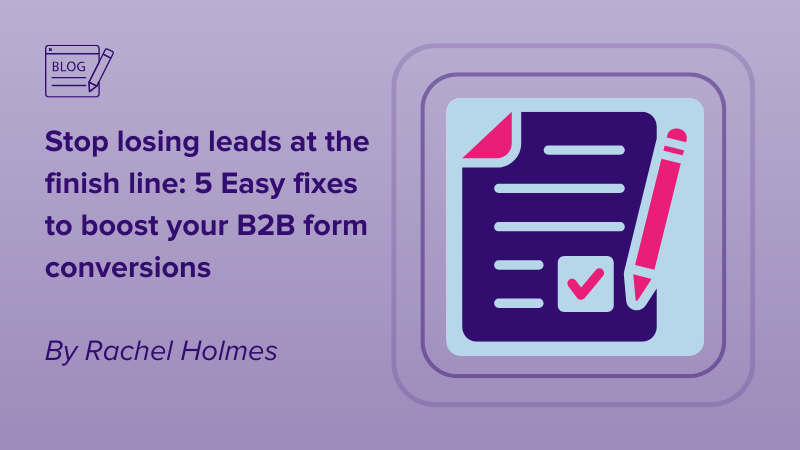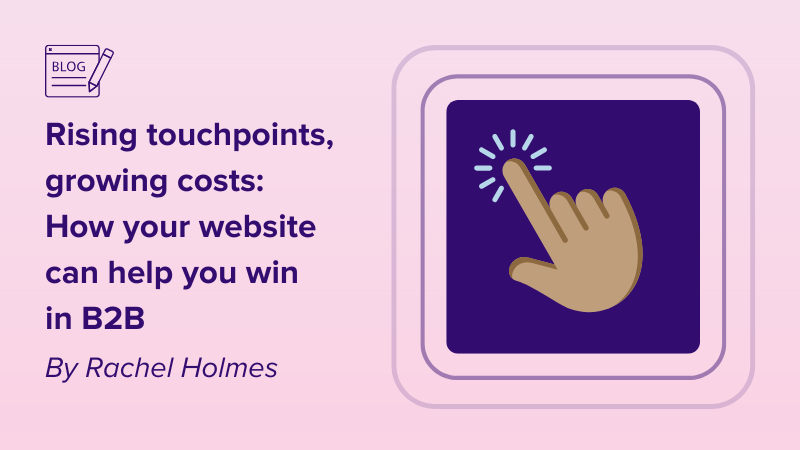Personalization has become vital to every marketing strategy. The benefits are hard to ignore, from better engagement to increased ROI. Utilizing personalization is proven to increase the success of your marketing campaigns. An overwhelming majority of B2B marketers have made it a core pillar of their marketing plan, but 19% of marketers still only see personalization as a non-critical strategy. Here are five tips to prove that personalization should be in every aspect of the marketing mix.
Where can B2B marketers improve, and what should they consider to ensure personalization becomes a core component of their marketing strategy?
Blend inbound and outbound personalization
Personalizing our outbound messaging has been a staple in B2B marketing for decades – think of all those ‘Hi [insert name]’ emails you’ve received over the years. Now, technology has made it easier for marketers to utilize personalization for inbound too. As a result, our B2B buyers expect to see personalization at every touch point in the customer journey. We’re not saying that outbound doesn’t have its place (it really, really does), but being able to personalize an experience that a prospect has personally chosen to undertake (i.e. visiting your website) is more engaging than an unsolicited email or display ad.
Better personas = better personalization
How do you better personalize those inbound experiences? With better personas, of course. Start with re-evaluating your current MarTech stack. Look at your analytics capabilities, and how well this integrates with your ability to personalize. Many marketers are stopping short of detailed personas, either because they can’t agree on what they should look like, or their technology just doesn’t have the capabilities to segment audiences (i.e diving beyond just sectors and verticals). Make sure your current tech stack allows you to segment your personas to ensure you create the right strategy.
Get to know your technology (and it will help you get to know your ROI)
One of the biggest barriers to personalization success is often not the technology itself, but a marketing team’s ability to use it to its full potential or integrate it effectively within the rest of their tech stack. This is arguably the biggest block to measuring the effectiveness of personalization. Whether the technology you’re using is new or old, take the time to understand its entire capabilities, then you can use it to support your strategy. Once understood, and properly integrated across the board, technology is the key to proving the ROI of personalization.
Get to know the data already at your fingertips
To see true success with personalization, every decision made should be based on the information you store on your target market and their buying habits. Start by looking at the results of your marketing campaigns and see where the gaps lie. For example, using your analytic tools to find your strongest campaigns, and which campaigns are letting you down. This will give you an idea of where personalization is needed. Then you can start to test what you’ve personalized and if it’s working. Testing your changes allows you to eliminate subjective opinions, so you’re always making business decisions based on facts.
Put personalization at the heart of everything you do
Of course, it’s not just about the technology. Personalization should sit at the center of your marketing activity. B2B marketers pride themselves on building long-lasting relationships with clients, built on mutual trust and understanding. That passion should be seen across every aspect of your organization, not just marketing, but sales and operations too.





